Bells, yells, and feasts—intel for the navel of the Mediterranean.

It’s crowded. Malta is one of the most densely populated countries in the world, with 423,000 souls packed into an area one-tenth the size of Rhode Island and one-fifth the size of Greater London. Most live on the congested island of Malta, with a few more spread onto the calmer Gozo, and the rest — all three of them — on Comino. But there’s still space for visitors: Tourism took off in the early 1960s and now accounts for 12% of Malta’s GDP. Its photogenic, ancient cities (the capital, Valletta, is a UNESCO Cultural Heritage Site) and turquoise lagoons and beaches keep travelers coming.
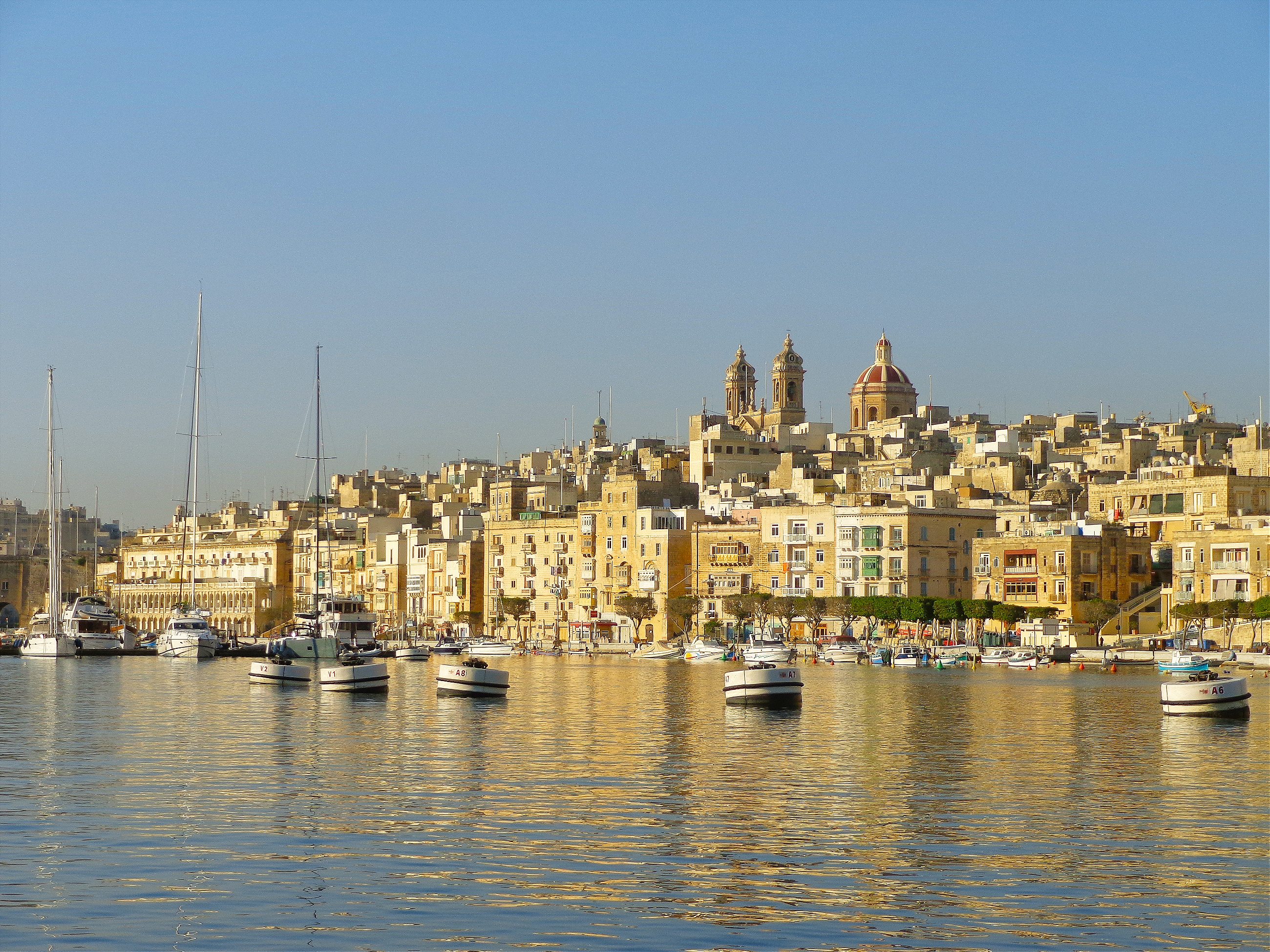

The Knights put Malta on the map. Malta is the navel of the Mediterranean, floating in the sea between Sicily and Libya. An ancient temple-building civilization, later Phoenician, Roman, Arab, Norman, and Aragonese occupations all made some mark on Maltese culture and left an impressive collection of UNESCO-anointed sites. Then for a couple of centuries from 1530, the Order of the Knights of St. John–originally hospitallers recruited from Europe’s noble families accompanying pilgrims during the Crusades–ruled Malta, pulling it culturally towards Europe and transforming it into a maritime power that gave the Ottomans a run for their money. The noble Knights also, quite literally, furnished Malta with Europe’s finest art and architecture. With the Knights’ power on the wane a couple of centuries later, Napoleon took the islands with little resistance. After two turbulent years of anti-clerical French rule, the Catholic Maltese asked Britain for help kicking out the French. The Brits, sensing opportunity, obliged, and remained for 164 years until Malta became independent in 1964. Malta joined the European Union in 2004.
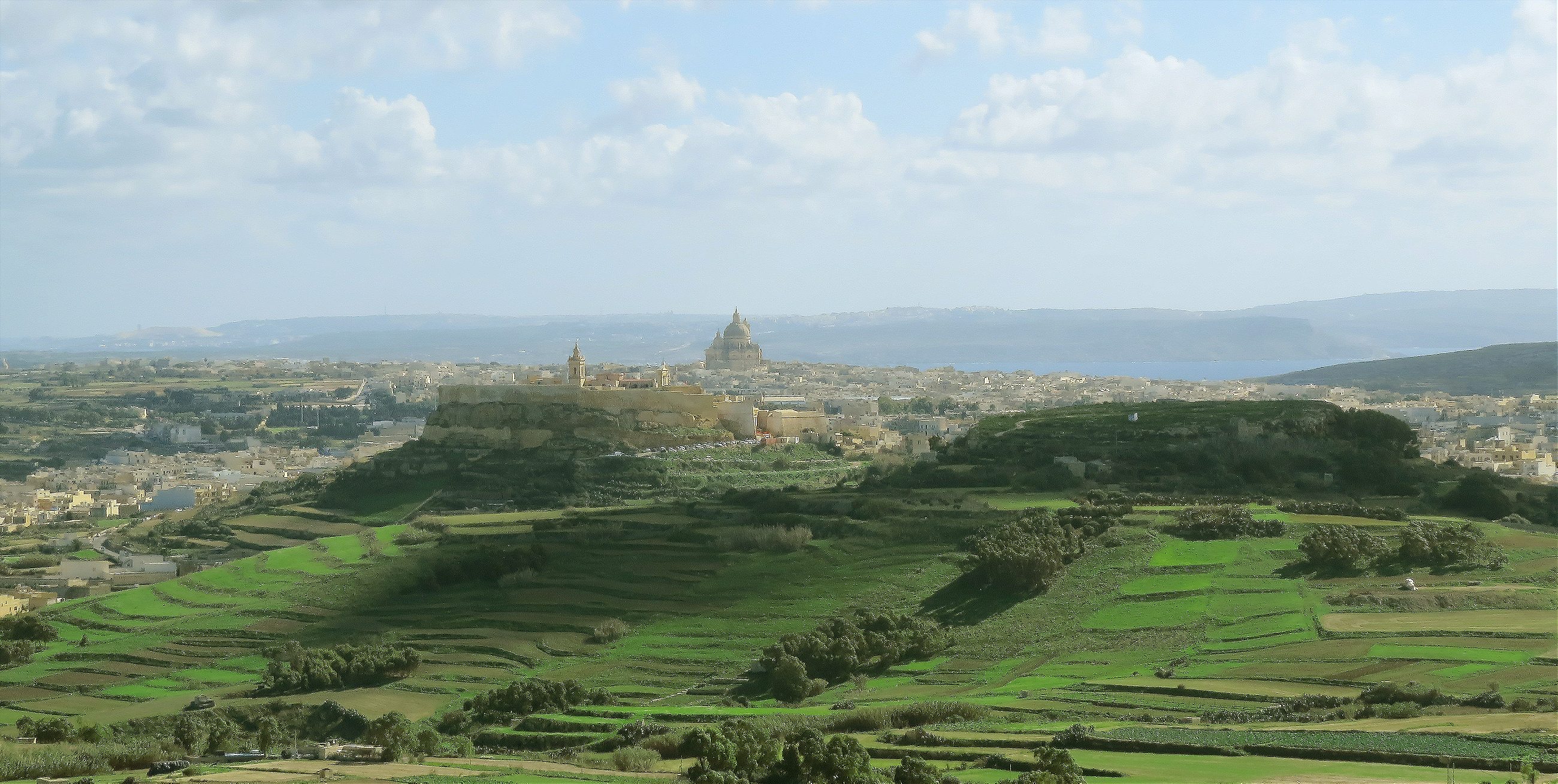

Don’t follow the white taxis—they’re bad news. Locals give these a wide berth, for good reason. The white cabs at the airport are expensive, and the drivers are rude and slack about switching their meters on. It’s smarter to use one of the cab companies that do online bookings. Ecabs and John’s are both reliable. Buses are a cheap alternative and cover almost everywhere, and there is a limited night service too. (Malta also has one of the densest road networks in the world.)

Pastizzi is king. Maltese cuisine is Mediterranean-oriented, but the essential Maltese snack is the simple pastizz: a lozenge-shaped, greasy, cholesterol-charged pastry filled with ricotta or peas. Pastizzeriji are all over, but the pastizzi institution is the Crystal Palace Bar in Rabat, a hole-in-the-wall that closes for only two hours each day during the week. A coffee and a couple of pastizzi wil cost a couple of dollars. (But be warned that “pastizz” is also a derogatory term, and a euphemism for a woman’s more intimate parts.) Pastizzi might be one reason the Maltese rank high on the obesity scales worldwide; Maltese men rank 16th worldwide, and Maltese women are the most overweight in Europe. Pastizzi are not the only culprit, though. The Maltese are among Europe’s most exercise-shy folk.
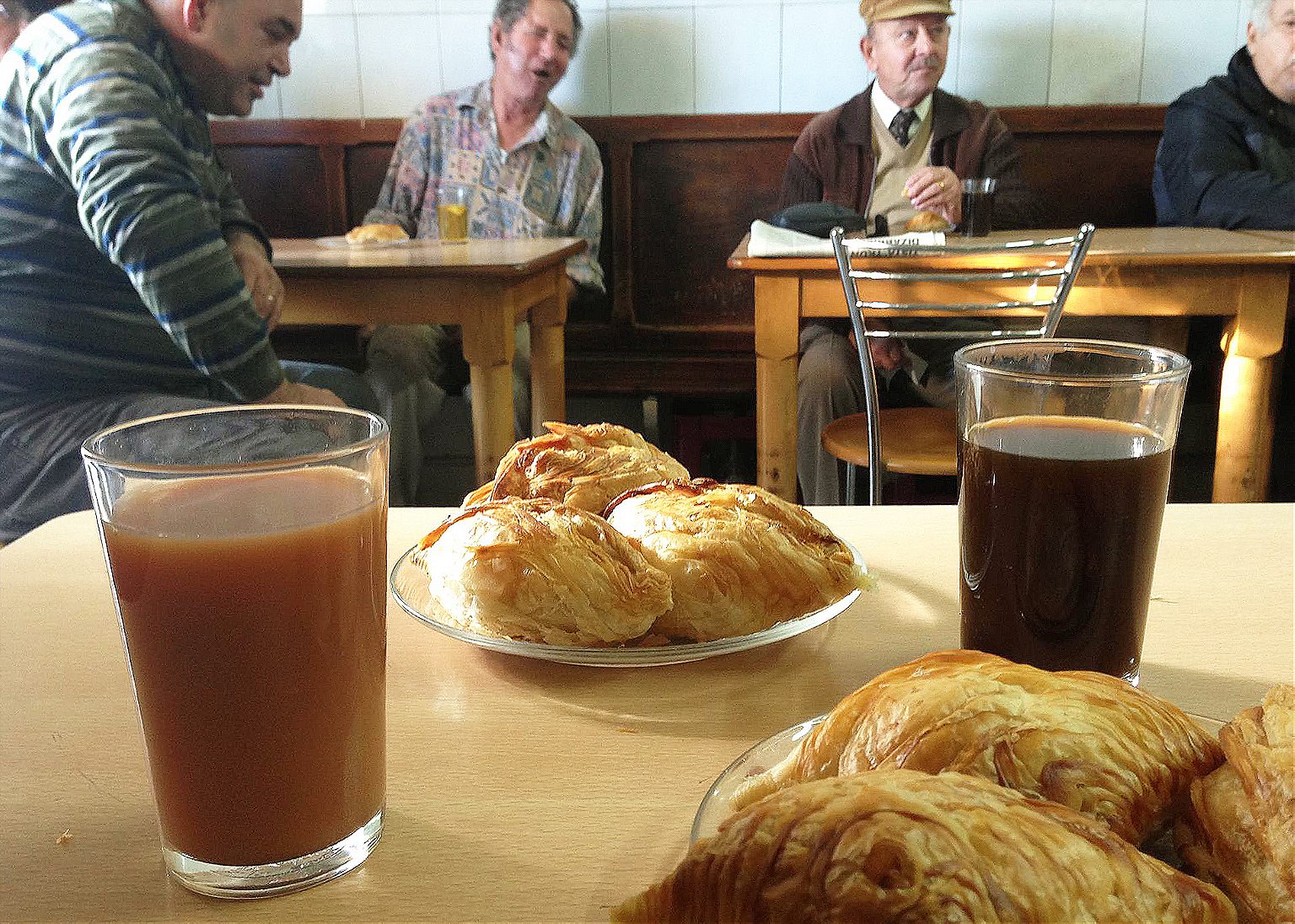

Bunnies are food, not pets. Malta imports much of its food, so local fare has always been influenced by and adapted from outside cuisines – especially Italian, Sicilian, and North African. There is no official national dish, but a feast of stewed rabbit known as fenkata comes close. Some believe the popularity of fenkata is rooted in resistance to the hunting restrictions imposed by the Knights of St. John, then honed when the Maltese learned from French knights how to domesticate rabbits. Though there are hunted wild rabbits on the islands, these are usually lean and small. Rabbits for the table are more likely bred for the purpose. Variations include stuffat tal-fenek (rabbit stew), fenek moqli (fried rabbit), and spagetti biz-zalza tal-fenek (spaghetti in rabbit sauce). Restaurants specializing in rabbit are found in Mġarr and Baħrija in the north of Malta, and there is the legendary Charlie’s Inn in Salina, more affectionately known as Charlie l-maħmug (“Unhygienic Charlie”).
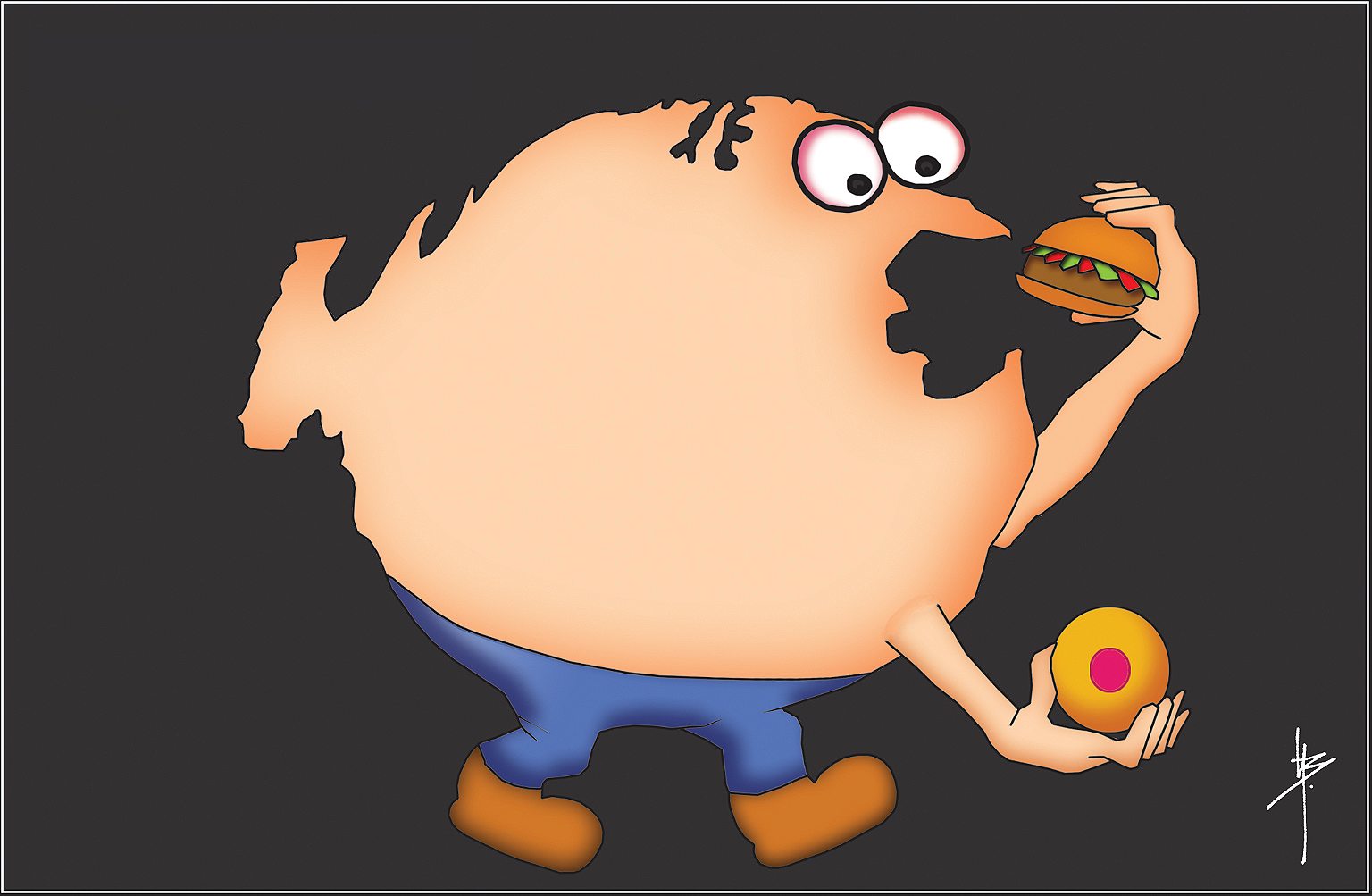

It’s best not to talk politics. The Maltese take their politics seriously, and both the Labour and Nationalist parties have a large and loyal following. Election turnouts are super high, and there is a party office-slash-club in every town and village. A lot of Maltese follow their party like a football club, through thick and thin. There were some politico-religious skirmishes in the 1960s and some violent incidents in the 1980s, but while these tensions have subsided, some bitter memories remain. When election time comes, some establishments prohibit all talk of politics, even putting up signs forbidding it.

Malta has a church for every day of the year. That’s what they say, but the number is actually somewhere around 359. Still, it’s a big number for such a small country (more than one for each square kilometer.) Malta’s language is rooted in its Arab past, but day-to-day culture has a big Roman Catholic footprint. Luke the Apostle and Paul of Tarsus were shipwrecked off Malta in 60 A.D., and Paul is credited with introducing Christianity to the islands and making Malta one of the earliest outposts of the faith. Catholicism is still serious business in Malta—abortions are illegal—and church attendance is among the highest in Europe. This enthusiasm is reflected both in the outsize number of churches, and their baroque ostentation, mostly funded by parishioners themselves. And they’re not just any churches—St. John’s Cathedral in Valletta is a wonder to behold, and owns two Caravaggios—including his largest and only signed work, which is proudly displayed in the church’s oratory.
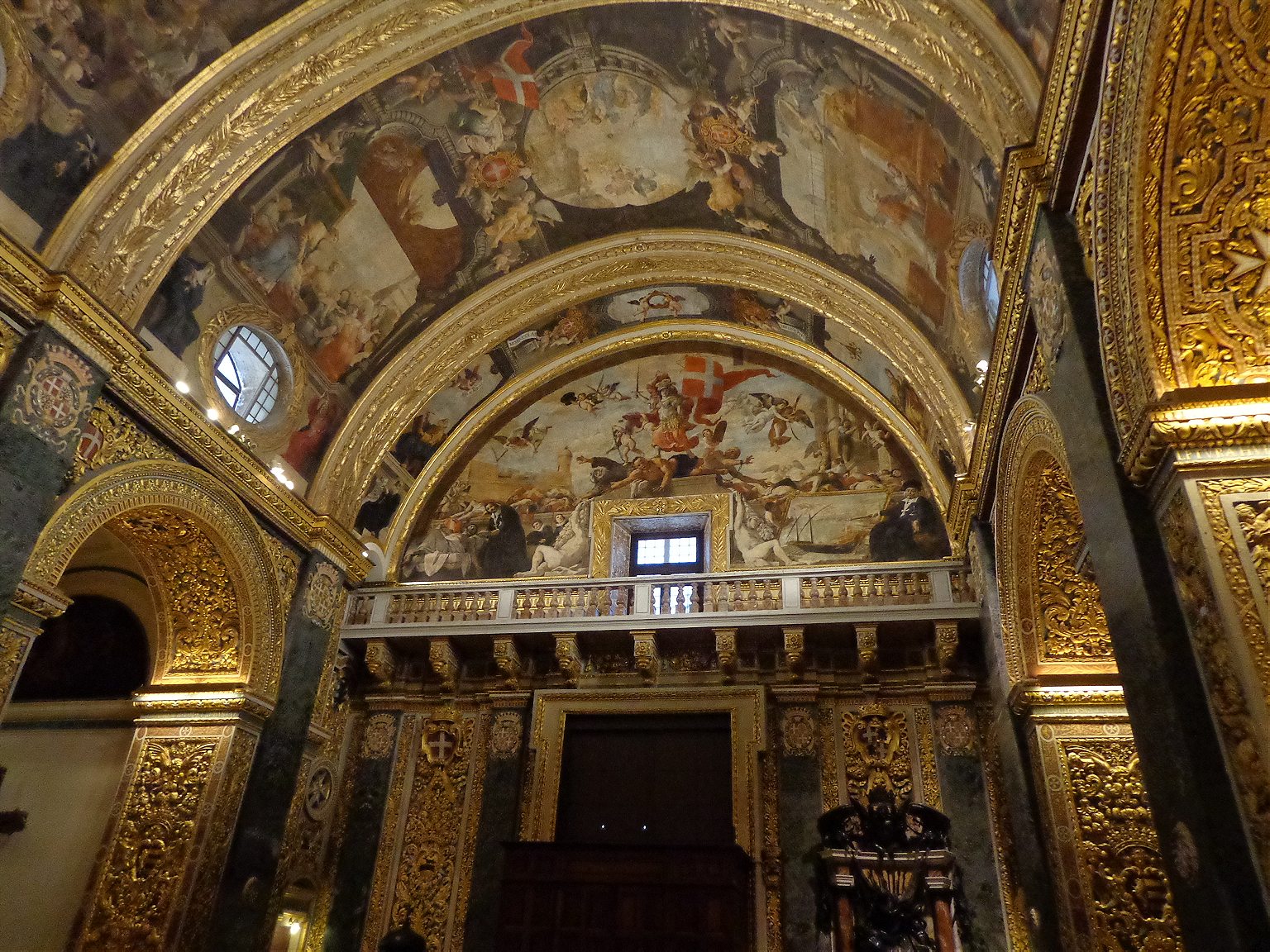

Pika makes Malta go round. Like the German schadenfreude, pika doesn’t translate well, but the closest word is something like “rivalry”. Towns and villages strive hard to outdo each other at their feasts, with fireworks displays, sports, or the height of the village flagpole. This probably explains why a village of 3,000 in Gozo built the world’s third-highest unsupported dome, and why the town of Mosta has the world’s fourth-largest unsupported dome. Intra-community pika can be stronger still: If one town’s band club builds new premises, the other is likely to beg, steal, and borrow to build a larger one. For a long time the spire of the Anglican Cathedral was Valletta’s highest pinnacle, until the Roman Catholic Carmelites built a huge dome next to it with the lantern stretching a few crucial feet higher than the “heathen” spire.
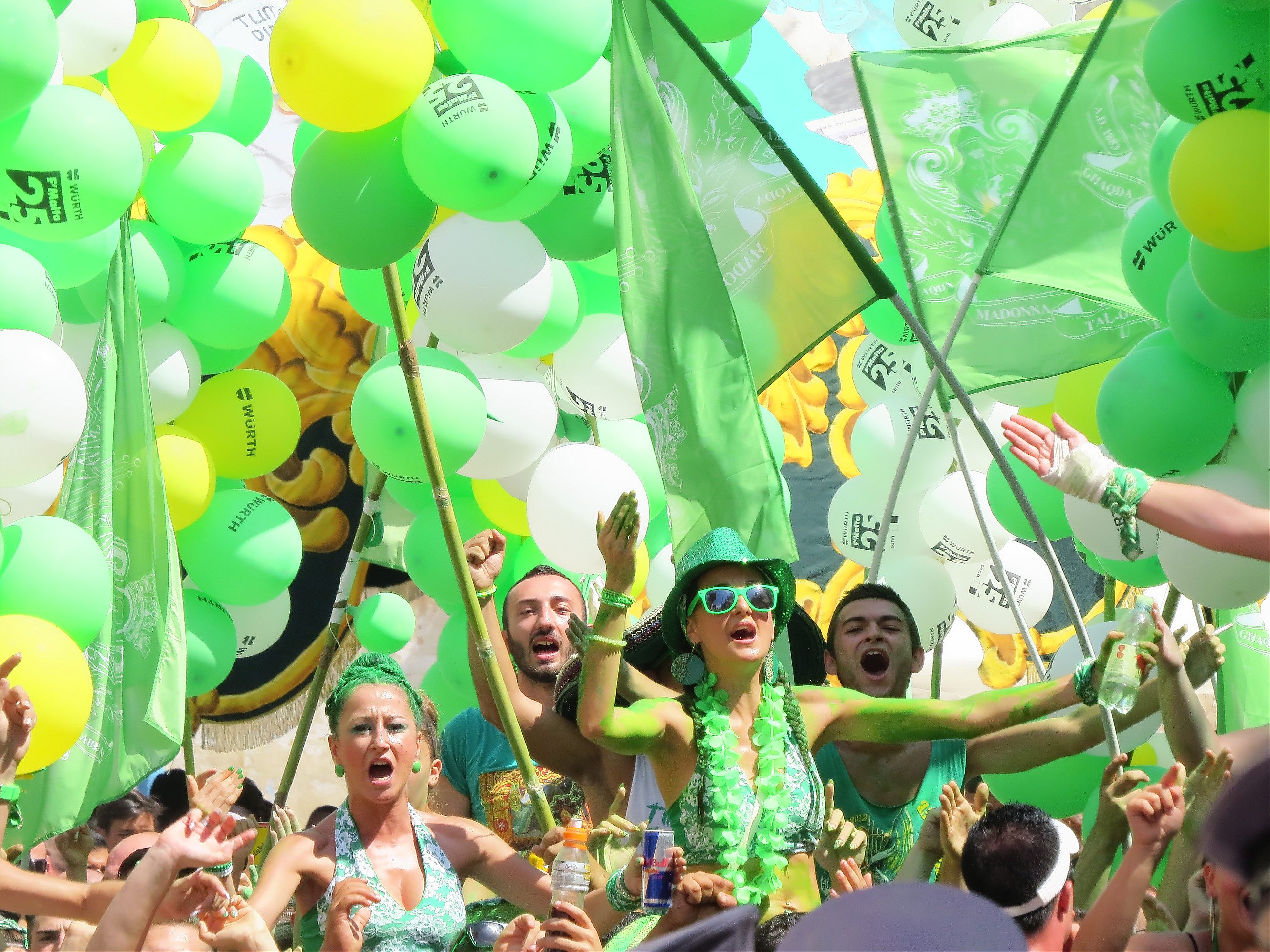

In summer, you can’t avoid the festa. All Maltese towns and villages celebrate their patron saint in style with weeklong activities leading up to feast day, which climaxes with a procession, music, and fireworks. The most impressive fireworks displays are in the south of the island, where the villages of Żurrieq, Mqabba, Qrendi, Għaxaq, and Gudja compete fiercely. Santa Marija in August brings fireworks geeks from all over, because several feasts are celebrated simultaneously, naturally with fireworks befitting the occasion.

Every village has a band. Sometimes two. A relic of British regimental marching bands common during the Empire’s heyday in Malta, philharmonic band clubs started up in the 19th century hand-in-hand with village festas, and are an integral part of village life, with their bars functioning as popular local hangouts. They are generally a mix of volunteer and semi-professional musicians brandishing woodwind, brass, and percussion instruments. But band clubs do far more than perform music: They organise town social events, and are the linchpin of the loud and proud festas that dominate Maltese summers. A pika-fuelled highlight is the ritual of trash-talk-slash-chanting between rival band clubs. The most boisterous band marches are held in Ħamrun and Żabbar.
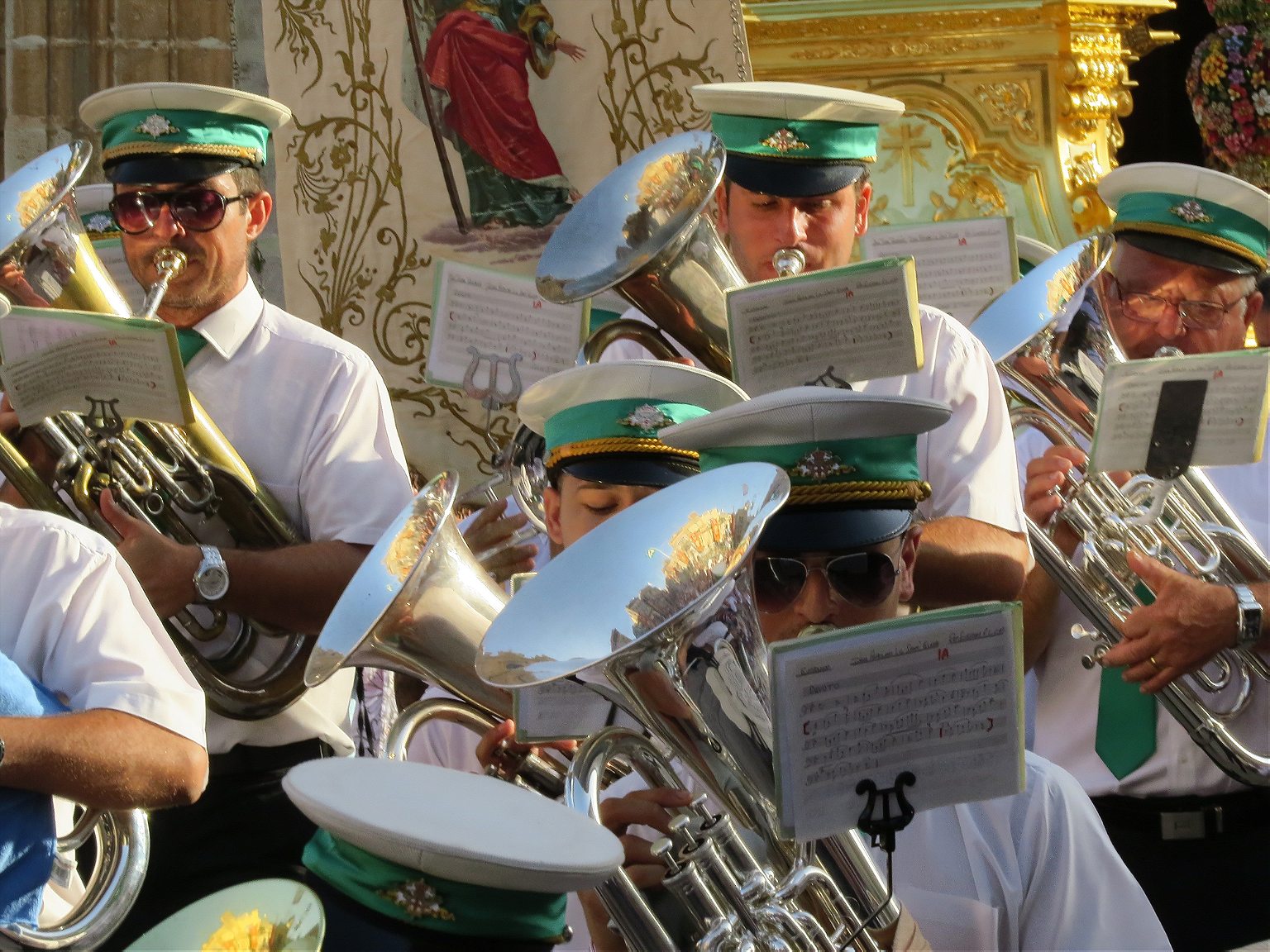

Breaking records is a national pastime. Guinness or otherwise, Malta has a fixation for setting (sometimes bizarre) records. Turu Rizzo was the first man to attempt a swim from Sicily to Malta in 1933, but he was thwarted by rough weather three miles from home. Fellow Maltese Nicky Farrugia succeeded in 1985. Albert Rizzo (grandson of Turu) was the first Maltese to get his name in the Guinness Book of Records when in 1980 he established a record for treading water, spending 72 hours and three minutes in the sea. The Lily Fireworks Factory of Mqabba created—and fired up—the world’s largest Catherine Wheel in 2011. The town of Qormi went for the world’s largest wine glass for their festival in 2012. The Zabbar local council set up the world’s largest dining table, measuring 359 meters (just over 1177 feet) along Zabbar’s main street in 2013.

Malta’s bathing waters are the cleanest in Europe. This is thanks to sewage treatment plants part-financed by the EU. But the most popular sandy beaches are near large hotels and can get quite crowded in summer; Comino’s famed Blue Lagoon is swarmed with day-trippers during weekends. Gozo has just one large sandy beach but is blessed with a good number of secluded rocky coves. Għajn Barrani, also in Gozo, is a good candidate for a secluded beachy getaway: a perfectly flat rock shelf with some huge boulders that provide welcome shade. There are no amenities, and it’s a kilometer (just over half a mile) on foot to get there, the last part on clay slopes. Blissfully, it’s not signposted either.
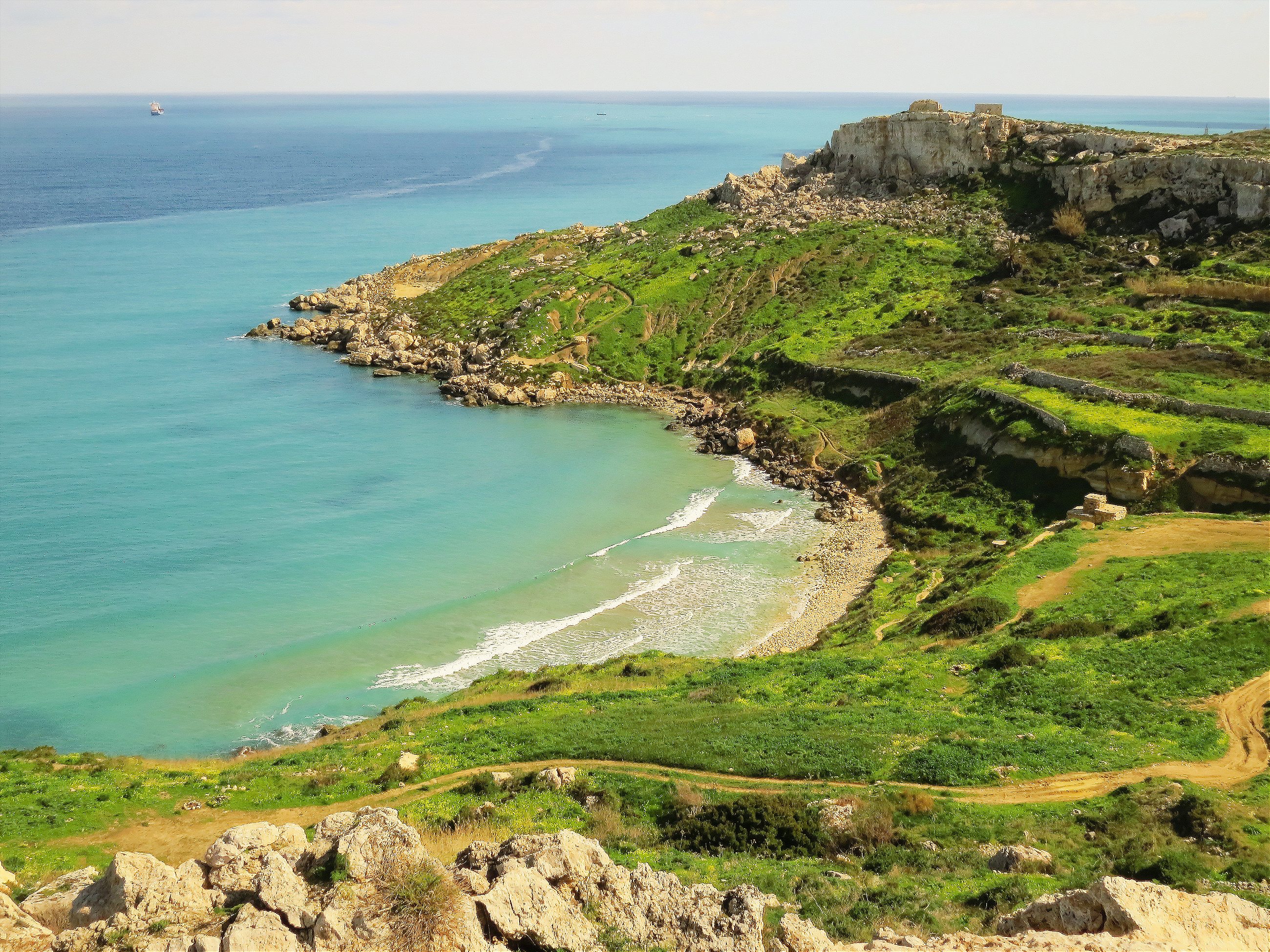

There will be noise. Lord Byron is said to have called Malta the island of yells, bells, and smells. Whether he really said this is disputed, but it may have stuck because it’s accurate on the bells at least. Deafening petards are let off as early as 8 a.m. on feast days and can go on—in healthy disregard for local laws—past 11 p.m. Church bell-ringing starts as early as 7 a.m. on feast days. Gas delivery trucks honk loudly to announce their presence, and vans selling doughnuts go one worse with a loudhailer playing a pre-recorded sales pitch. Most Maltese seem to naturally talk loudly and like their Italian neighbours, talk with their hands and gesticulate, even while driving. The gesticulating is mostly non-aggressive, even if it does not appear that way.

Malti is the only Semitic language written in Latin script. The distinctive Maltese language is also the only Semitic-origin language officially recognized as a European Union tongue, and provides translation work for many Maltese expats in Brussels. It is an ancient language descended from Siculo-Arabic (an Arabic dialect that developed in Sicily, then Malta) with a sprinkling of English, Italian, and French words.


Malta loves cars. The number of cars in Malta is staggering. At the last count, there were 337,000 motor vehicles, and around 50 new car licences are issued daily. Car maintenance is a refined art and old models such as the Hillman Minx, Volkswagen Beetle, and the Triumph Herald are still around. The original 1970s Escort MK1 is a cult car in Malta, and British Bedford trucks from the 1950s and 1960s still make rounds selling household items or paraffin. Until public transport was overhauled in 2011, some of the buses were over 50 years old, and most of the bus bodies were built locally, with vernacular decoration added in the form of finely painted designs and script called tberfil.


You can become Maltese—at a price. Malta raised eyebrows in 2013 when it launched its International Investment Program, making it possible for anyone with enough cash to become a Maltese citizen—and therefore snag a European Union passport. The criteria include passing a “Fit and Proper” test, contributing €650,000 into a National Development & Social Fund, making an investment in property of at least €350,000 or investing €150,000 in bonds or shares approved by the Maltese government to be kept for at least five years.


Immigration is a sensitive topic. Thanks to its location, over the last decade Malta has been a way station for migrants departing from the North African coast (mostly Libya) on rickety boats, hoping to get to mainland Europe. In 2012, Malta received the highest number of asylum seekers for its population. The Maltese are divided on the issue. Some have dubbed this Malta’s ‘third siege’(the first was when the Knights of St. John withstood the Ottoman forces in 1565, and the second during World War II when Malta was bombarded by the Italians and then the Germans) and some feel that the European Union should have a fairer burden-sharing policy, because Malta is tiny and already crowded. There were some public protests against illegal immigration, but these are now discouraged and condemned by all political parties.

Popeye lived here. Malta has often served as a backdrop for Hollywood movies: Brad Pitt and Angelina Jolie closed off a whole beach to build a film set for the upcoming film By the Sea. Game of Thrones scenes were shot all over, and Russell Crowe battled tigers at Fort Ricasoli in Gladiator. But there’s also a more permanent film settlement: In 1980, set designers built an entire pirates’ village for Robert Altman’s musical Popeye adaptation, with a bald Robin Williams in the title role. The movie had mixed reviews, but the surreal Sweethaven Village still stands and is open for visitors.

Where to get away from the crowd. The Maltese do not generally indulge in leisure walking, so large stretches of the countryside are usually people-free. Majjistral Park in the north is a silent refuge six times the size of Valletta, with a labyrinthine boulder scree. Almost all of the island of Gozo is quieter and greener, and some Maltese now have a second weekend home there just to escape the crowd on the main island.
Top image: Festa of St Paul in Valletta.
